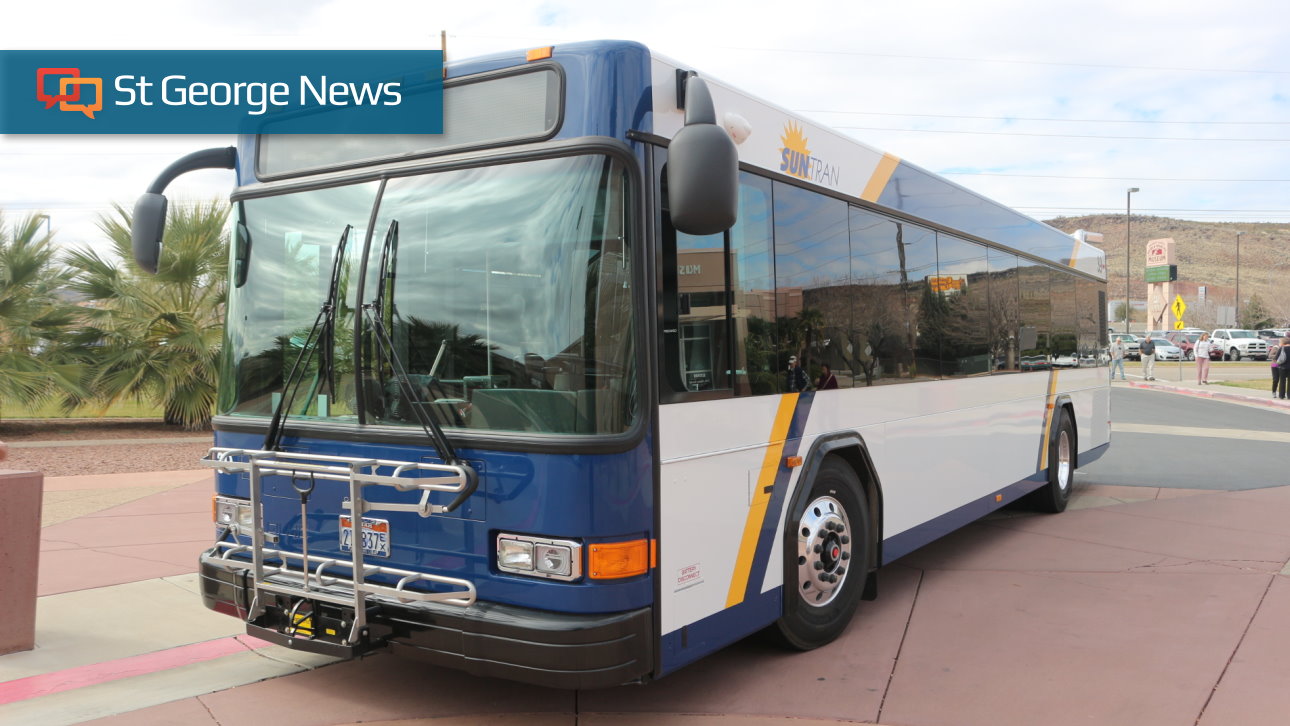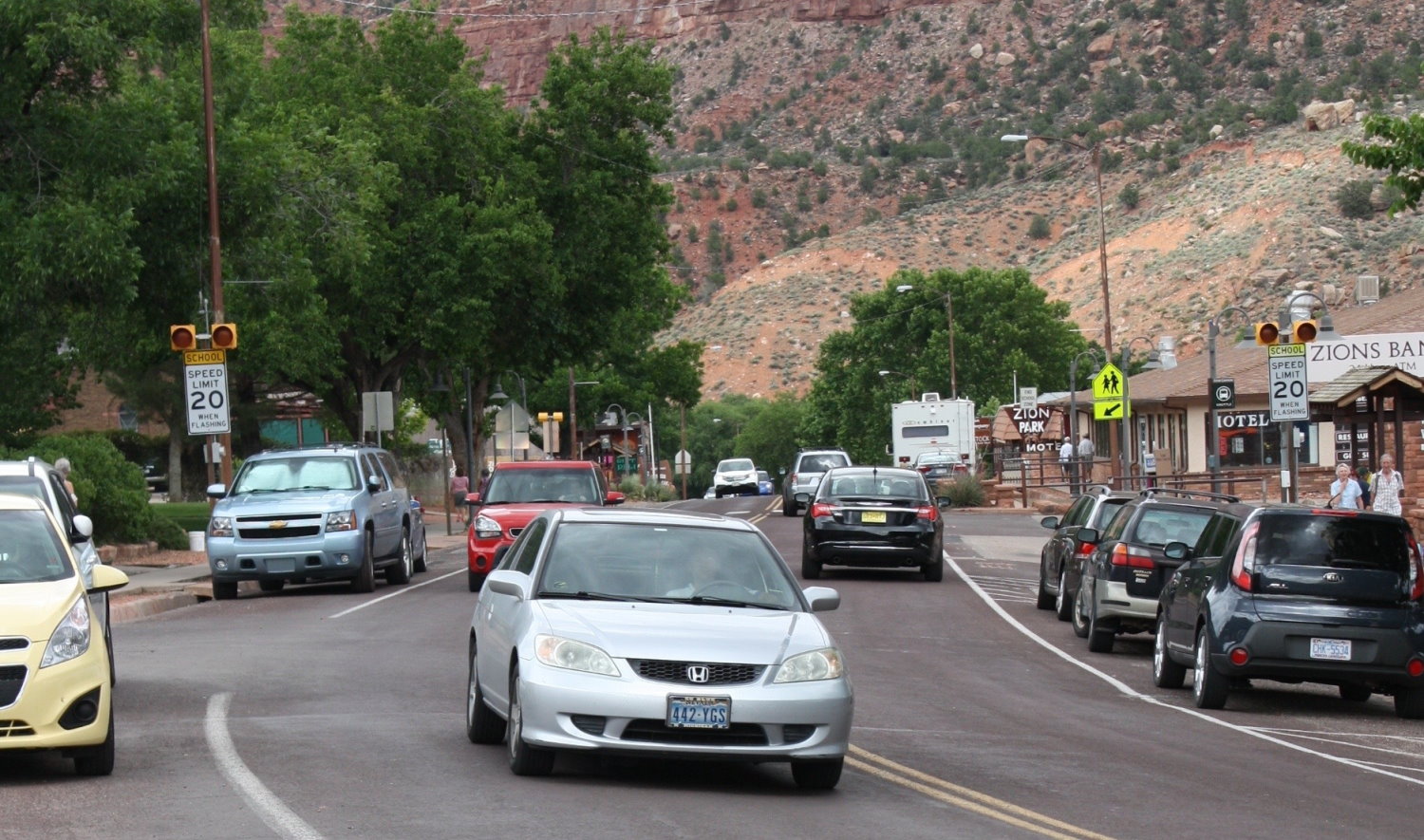ST. GEORGE — An ordinance implementing a countywide quarter-percent sales tax for transportation and transit funding was unanimously adopted by the Washington County Commission Tuesday.

“The public road infrastructure is the most valuable and expensive asset the county has,” Commissioner Dean Cox said prior to the vote.
The increasing population and tourism in the county has taken a toll on county roads, Cox said. Funds allocated from the state gas tax haven’t kept up with maintenance needs.
The quarter-percent sales tax is seen not only as a way to provide much needed funding for road infrastructure maintenance, but also funding the county plans to put toward a St. George to Springdale transit route the Utah Department of Transportation announced last May.
Read more: UDOT commits $15M to explore, implement Springdale-St. George transit route
UDOT is investing $15 million into the implementation of the route that was a part of an overall $100 million investment in recreational and tourism hot spots across the state. UDOT is slated to fund the transit line for up to five years with Washington County and its municipalities picking up the funding after that point.
Revenue generated by the 0.25% sales tax for transit would help fund the county and municipal obligation for the route, which is also anticipated to potentially serve as the future backbone of a countywide transit system.

Of the revenue raised by the sales tax, 20% would go to the county, 40% would go to the municipalities and 40% would go toward the municipalities where public transit systems currently exist, such as St. George and Ivins. Where there is no existing transit service, the county receives 60% of the sales tax revenue.
Washington City recently passed a resolution stating its intention to pursue the transit funding portion of the sales tax revenue for a transit system of its own. City officials have been wanting to bring a transit system into the city for years, yet have been frustrated by a continual lack of available funding.
The county is able to adopt the quarter-percent sales tax thanks to 2018 state legislation giving counties and municipalities the option to implement it. Counties must implement the tax by June 30, 2020. If they do not, then the municipalities can individually adopt the sales tax stating July 1, 2020.
An Association of Governments meeting with the County Commission and the county’s mayors was held in early May to discuss having the county take the lead on the sales tax with the mayors’ support.
Read more: County, municipal officials favor local sales tax to fund St. George-Springdale transit route

The mayors collectively voiced their favor for the county implementing the sales tax over their individual cities and towns doing it instead, particularly in relation to providing funding to the proposed transit route.
“I hate supporting new taxes,” Hurricane Mayor John Bramall said during Tuesday’s commission meeting. “I pay my fair share of taxes, and I think we all pay our fair share. The only advantage of this quarter-percent sales tax is that the tourists that come through …will be paying a lot of it, about 60%.”
Bramall estimated that about 40,000 tourists pass through Washington County. Hurricane is on the way to Zion National Park, which has seen 4 million visitors annually since 2016.
Commissioner Victor Iverson noted that while the transit funding portion of the quarter-percent sales tax has been highlighted, it only accounts for 40% of the overall funding. The remaining 60% will go toward road maintenance.
It has become increasingly difficult to stay ahead of road maintenance with funds from the state gas tax, Cox said.
Until 2016, Utah’s gas tax rate was untouched for 20 years, which led to a decrease in revenue as cars became increasing more efficient and needed less gas.

While the Utah Legislature raised the gas tax in 2016, it is still considered insufficient to address growing road infrastructure needs in the county.
Prior to the legislation, the question of the quarter-percent sales tax was put to the voters in 2016. Known as Proposition 1, it was defeated 28,986 votes to 26,311.
Read more: Proposed sales tax increase back on the table as council discusses countywide transit system
Opposition to the resurrection of the quarter-percent sales tax has been slim, Cox said.
“Generally, I’ve (run into) very few people who haven’t expressed support.”
Cox called the adoption of the quarter-percent sales tax a “win-win” because it will provide funding for road maintenance as well as transit that, once implemented, will help with the wear and tear of local roads as it will decrease the number of cars using them.
The county will notify the State Tax Commission of its decision. If everything is in order, the sales tax will be implemented Oct. 1, otherwise it will be delayed until Jan. 1, 2020.
Email: [email protected]
Twitter: @MoriKessler
Copyright St. George News, SaintGeorgeUtah.com LLC, 2019, all rights reserved.